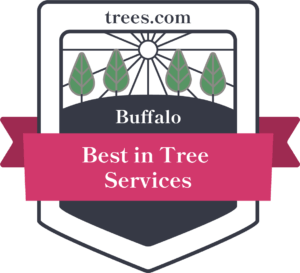A Guide to Keeping Your Tree Happy & Healthy: Common Tree Diseases
Why Understanding Tree Diseases Matters?
Trees are one of nature's greatest gifts. They provide shade, improve air quality, and enhance the beauty of landscapes. However, like all living organisms, trees are susceptible to diseases that threaten their health and longevity. For homeowners and property managers in Western New York, understanding common tree diseases is crucial in maintaining healthy, vibrant trees.
Check out the following to learn more about some of the most prevalent tree diseases in the region and how to spot their early symptoms.
Common Tree Diseases in Western New York
1. Anthracnose
Anthracnose is a fungal disease that targets deciduous trees like maples, oaks, and sycamores, which are abundant in Western New York. This disease thrives in cool, wet weather, making late spring an ideal time for it to develop.
Symptoms:
- Irregular, dark spots or blotches on leaves
- Premature leaf drop
- Twigs and branches may develop cankers
2. Dutch Elm Disease (DED)
Dutch Elm Disease has had a devastating impact on elm trees across North America, and Western New York is no exception. This disease is spread by bark beetles and has resulted in the loss of countless mature elm trees.
Symptoms:
- Leaves wilting or yellowing during the summer
- Defoliation starting from the upper branches and moving down
- Brown streaking inside the tree's bark
3. Apple Scab
If you're an apple tree owner or an orchard enthusiast, beware of apple scab. This fungal disease affects apple and crabapple trees, reducing fruit yield and quality.
Symptoms:
- Olive-green to black spots on leaves and fruit
- Premature fruit drop
- Leaves curling and turning yellow
4. Emerald Ash Borer Infestation
While not a disease, the emerald ash borer is an invasive insect causing significant harm to ash trees in Western New York. These beetles bore into the tree, disrupting its ability to transport water and nutrients.
Symptoms:
- Thinning canopy and dying branches
- S-shaped galleries under the bark
- D-shaped exit holes as the beetles emerge
5. Powdery Mildew
Powdery mildew is another common fungal disease affecting trees, especially during humid conditions. It often targets dogwoods and magnolias, leaving a distinct white powder on the leaves.
Symptoms:
- White or gray powdery coating on leaves, stems, and flowers
- Stunted growth or deformed leaves
- Leaves turning yellow and falling prematurely
6. Black Knot
Black knot primarily affects cherry and plum trees in the region. This fungal disease is easily recognizable by the black, tumor-like growths on branches and twigs.
Symptoms:
- Swollen, black galls on twigs and branches
- Tree growth stunted over time
- Severe infections may result in the death of branches
Steps to Keep Your Trees Healthy
Maintaining healthy trees involves a combination of proactive measures and quick action when problems arise. Here's how you can protect your trees from diseases year-round:
Regular Inspections
- Check your trees for signs of disease at least once a season.
- Look for changes in leaves, branches, bark, and overall vitality.
Proper Pruning
- Prune trees annually to improve air circulation and remove weak or diseased branches.
Mulch to Maintain Moisture
- Apply a layer of mulch around the base of your trees to conserve moisture and regulate soil temperature.
Water Wisely
- Keep your trees hydrated during dry spells, but avoid overwatering, as it can lead to root rot.
Let Our Tree Service Company Help
Western New York's landscape is rich with beautiful trees that offer shade, serenity, and seasonal charm. By staying vigilant and proactive, you can ensure that your trees remain healthy and disease-free for years to come.
If you’re unsure about your tree’s health or how to tackle a problem, turn to Mays Tree Service in Lancaster, NY. Our team’s expertise can save you time, effort, and most importantly, your beloved trees. No matter the nature of your needs, contact our tree service company to get started. Your trees are an investment in the beauty and value of your property, and they deserve the best care possible!

